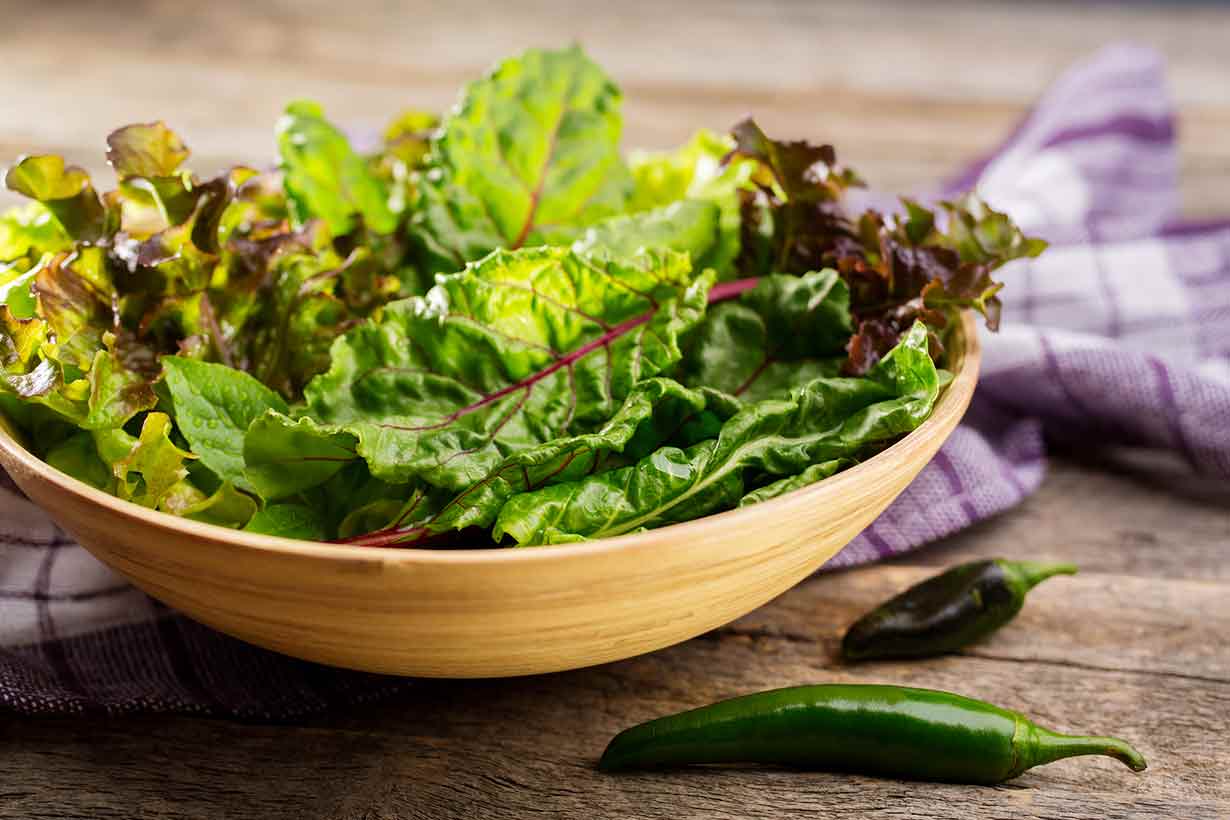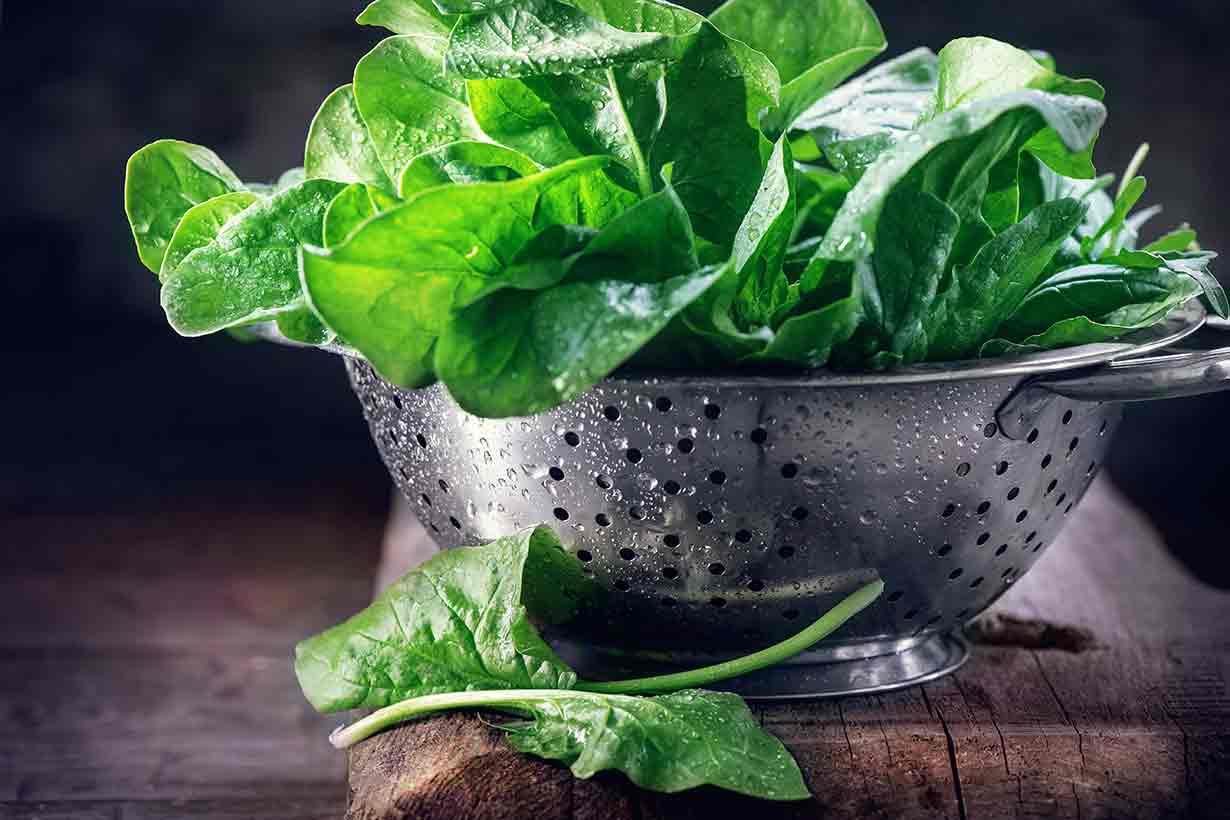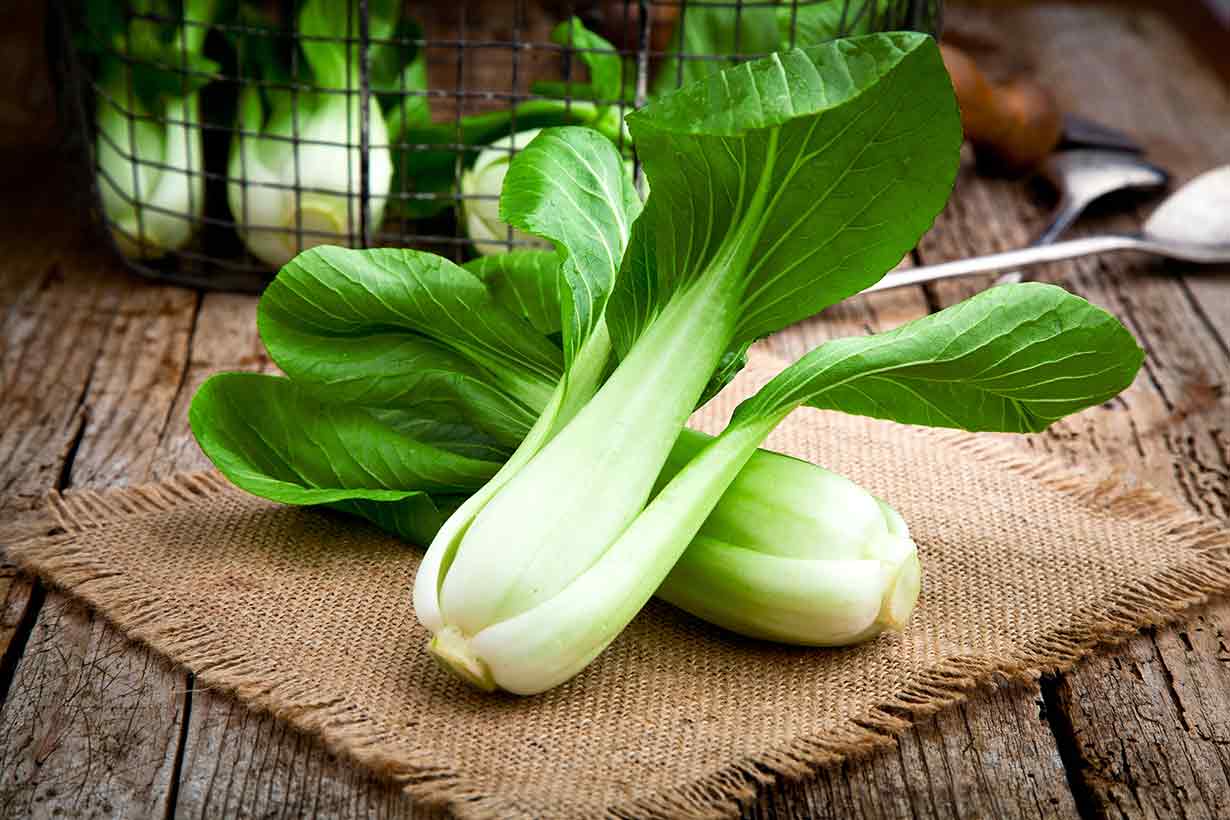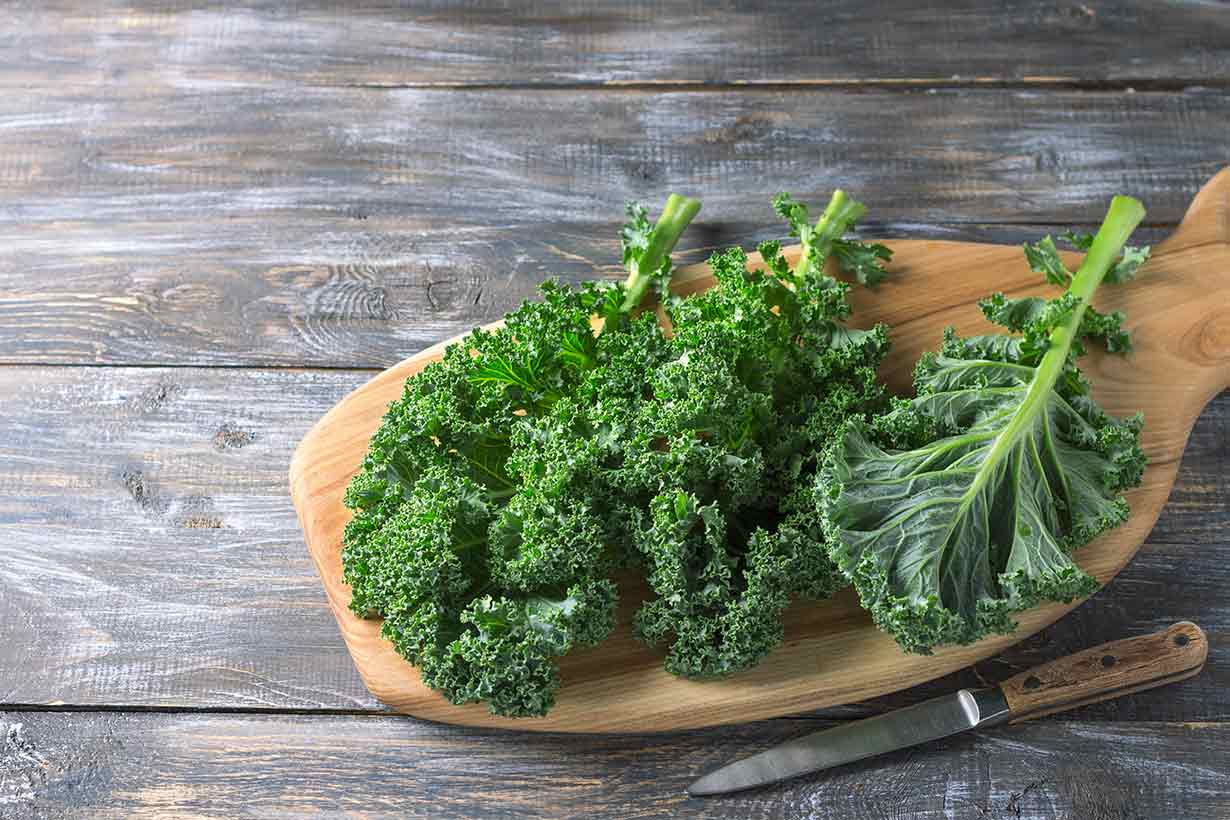Green amaranth leaves are a relatively lesser-known vegetable.
However, this leafy green provides a broad range of essential nutrients.
This article offers a guide to green amaranth, its nutritional properties, and potential benefits.
Table of contents
What Are Green Amaranth Leaves?
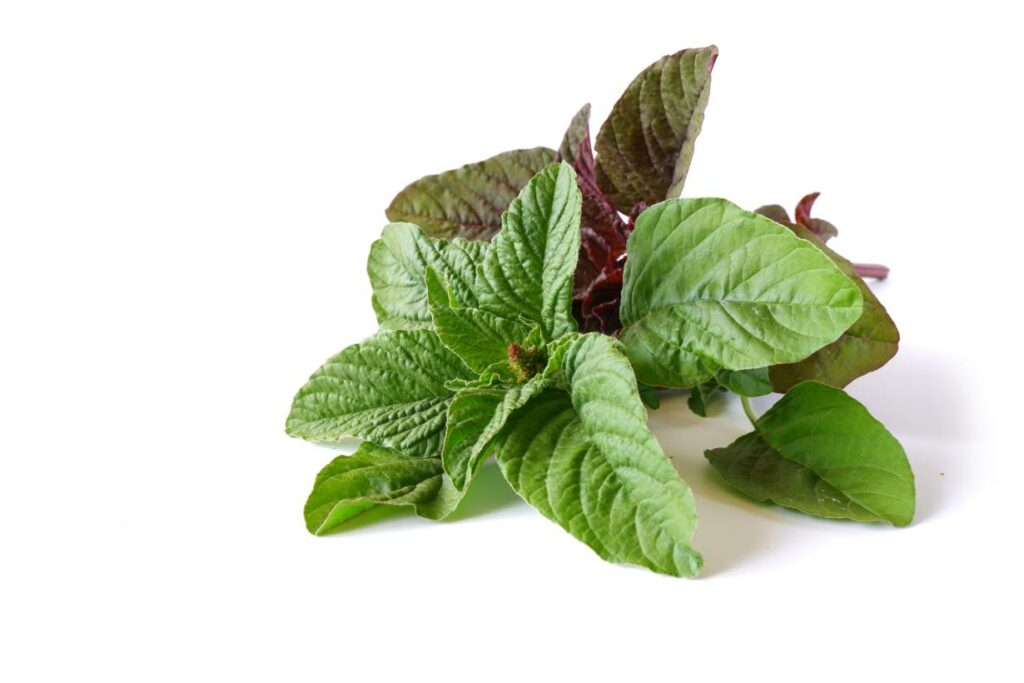
Amaranth leaves are the leaves of several species of plants in the Amaranth genus.
Also known as ‘Chinese spinach’ and ‘yin tsai,’ green amaranth leaves are consumed around the world as a leafy green vegetable.
However, the usage of the vegetable varies depending on location. For example, despite growing worldwide, green amaranth leaves are most commonly used in East and South Asian cuisine.
The leaves have an earthy, mildly nutty flavor and taste somewhat like spinach. They can be eaten raw or cooked.
Green amaranth leaves provide a good source of fiber, phytonutrients, and a range of vitamins and minerals.
Nutrition Facts
Green amaranth leaves are nutritious, but which specific nutrients do they provide in high amounts?
The following tables show the full nutritional values of cooked green amaranth leaves per cup (132-gram) serving.
The USDA’s FoodData Central database is the source of nutritional data. Daily values (% DV) have been calculated using USDA data alongside the FDA’s daily values (1, 2).
| Name | Amount | % Daily Value |
|---|---|---|
| Calories | 28 kcal | |
| Carbohydrates | 5.42 g | 2% DV |
| Fiber | 4.75 g | 17% DV |
| Sugars | 0.45 g | |
| Fat | 0.24 g | 0.3% DV |
| Saturated | 0.07 g | 0.4% DV |
| Monounsaturated | 0.05 g | |
| Polyunsaturated | 0.11 g | |
| Omega-3 | 0.001 g | |
| Omega-6 | 0.10 g | |
| Protein | 2.78 g |
Vitamins
| Vitamin | Amount | % Daily Value |
|---|---|---|
| Folate | 75.2 mcg | 18.8% DV |
| Vitamin A, RAE | 183 mcg | 20.3% DV |
| Vitamin B1 (thiamin) | 0.03 mg | 2.5% DV |
| Vitamin B2 (riboflavin) | 0.17 mg | 13.1% DV |
| Vitamin B3 (niacin) | 0.74 mg | 4.6% DV |
| Vitamin B5 (pantothenic acid) | 0.08 mg | 1.6% DV |
| Vitamin B6 (pyridoxine) | 0.23 mg | 13.5% DV |
| Vitamin C | 43.2 mg | 48% DV |
| Vitamin E | 0.58 mg | 3.9% DV |
| Vitamin K | 1540 mcg | 1283% DV |
Minerals
| Mineral | Amount | % Daily Value |
|---|---|---|
| Calcium | 276 mg | 21.2% DV |
| Copper | 0.21 mg | 23.3% DV |
| Iron | 2.98 mg | 16.6% DV |
| Magnesium | 72.6 mg | 17.3% DV |
| Manganese | 1.14 mg | 49.6% DV |
| Phosphorus | 95 mg | 7.6% DV |
| Potassium | 846 mg | 18% DV |
| Selenium | 1.19 mcg | 2.2% DV |
| Sodium | 27.7 mg | 1.2% DV |
| Zinc | 1.16 mg | 10.5% DV |
Benefits of Green Amaranth Leaves
Based on their nutritional properties and scientific research findings, here are some benefits of amaranth leaves.
An Excellent Source of Vitamins C and K
Green amaranth leaves are a significant source of vitamins C and K.
Per 100 grams, cooked amaranth leaves offer 41.1 mg of vitamin C (46% of the daily value). Per 132-gram cup, the vitamin C content is 43.2 mg, 48% of the daily value (1).
Vitamin C is an essential nutrient that plays a vital role in the immune system and protects cells from free radical damage (2).
The vitamin K content of cooked amaranth leaves is 1167 mcg per 100 grams (973% DV) and 1540 mcg per 132-gram cup (1283% DV) (1).
Among its functions, vitamin K is an important nutrient for bone health and blood clotting (3).
Rich In Minerals
Green amaranth leaves provide a broad range of essential minerals. Among these, they are particularly high in calcium, copper, magnesium, manganese, and potassium.
Among these minerals, calcium and potassium are considered “dietary components of public health concern for the general U.S. population” (4).
In other words, the underconsumption of these essential nutrients is relatively prevalent in the population.
Calcium is important for bone health, and potassium has a vital role in blood pressure regulation (5, 6).
Per 100 grams of cooked amaranth leaves, there are 641 mg of potassium (14% DV) and 209 mg of calcium (16% DV). Per 132-gram cup, this rises to 846 mg of potassium (18% DV) and 276 mg of calcium (21% DV) (1).
Green Amaranth Supplementation May Improve Several Health Markers
In a 2014 clinical study, postmenopausal women consumed either supplemented amaranth leaves powder, drumstick leaves powder, or no supplement for three months (7).
In the study, thirty women consumed nine grams of amaranth leave powder daily for three months.
Compared to baseline, the women had improved serum levels of retinol (vitamin A) and vitamin C, higher blood antioxidant status, and a significant decrease in fasting blood sugar after three months of supplementation (7).
High In Fiber
The nutrition facts section shows that a 132-gram cup of cooked amaranth leaves provides 4.75 grams of dietary fiber.
The current daily value for fiber, based on a 2000-calorie diet, is 28 grams per day. Thus, a cup of cooked amaranth leaves provides 17% of the daily value (2).
An extensive umbrella review of 52 meta-analyses involving 47,197 participants was published in 2022. This umbrella review examined the association between dietary fiber intake and cardiovascular risk factors. Overall, higher dietary fiber intake was associated with significantly reduced blood pressure, total cholesterol, and low-density lipoprotein (LDL) cholesterol (8).
Improves Vitamin A Status and May Reverse Nightblindness
In a 2005 study, nightblind pregnant women living in Nepal consumed 150 grams (raw weight) of green amaranth leaves daily for six weeks.
At the end of the six-week study, the participants had a higher vitamin A status. Additionally, as measured by a pupillary threshold test, dark adaptation significantly improved, and symptoms of nightblindness were reversed across the participants (9).
This study shows that consuming green amaranth leaves is an effective way to increase vitamin A status.
Contains Various Phytochemicals
Green amaranth leaves contain a high concentration of phytochemicals (plant chemicals) such as polyphenols, carotenoids, and chlorophyll (10).
Among these, green amaranth leaves are particularly high in the following compounds (11):
- Carotenoids
- Chlorophyll a
- Chlorophyll b
- Betacyanin
- Betaxanthin
- Flavonoids
These compounds are bioactive, meaning they have a biological effect on the body. Diets containing higher levels of polyphenols and overall phytochemicals are associated with improved long-term health outcomes (12, 13, 14).
Green Amaranth Versus Red Amaranth Leaves
In addition to green amaranth leaves, it is possible to buy red amaranth.
Are there any significant differences between these two leafy vegetables? Firstly, the overall nutritional composition of green and red amaranth is similar.
However, pigments within the leaf determine the difference in color between green and red amaranth.
Among these differences, red amaranth contains two-to-three times higher carotenoid content than green amaranth leaves. Additionally, red amaranth has a higher content of flavonoids and phenolic acids (types of polyphenol) compared to green leaves (15).
How Do Amaranth Leaves Compare To Other Leafy Greens?
Like most leafy green vegetables, amaranth leaves are a good source of provitamin A carotenoids and vitamin K.
As with the taste similarities to spinach, green amaranth leaves are also similar nutritionally. Both leafy vegetables contain similar amounts of vitamins A and K, calcium, potassium, and fiber.
Do Amaranth Leaves Have Any Potential Downsides?
The main potential downside of green amaranth leaves is that they contain a high concentration of oxalate (oxalic acid).
Oxalates are compounds found in plants that, in susceptible people, can sometimes form crystals and then kidney stones (16).
It is important to note that this oxalate content is not an issue for most people.
However, some people at risk of kidney stones may be following a medically prescribed low-oxalate diet (17, 18).
Final Thoughts
Green amaranth leaves aren’t quite as well-known as other leafy greens like kale and spinach.
However, they offer just as much nutritional value, and many people enjoy the way they taste.
Amaranth leaves provide an excellent source of fiber, phytonutrients, and numerous vitamins and minerals for very few calories.
Including them in the diet is a simple way to enhance our essential nutrient intake.

